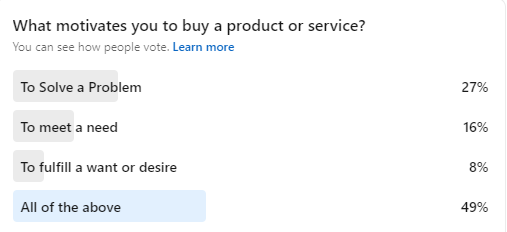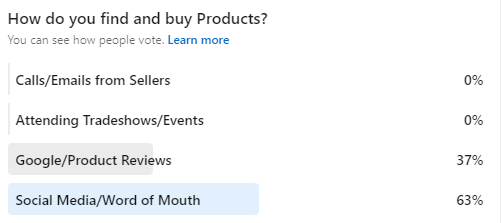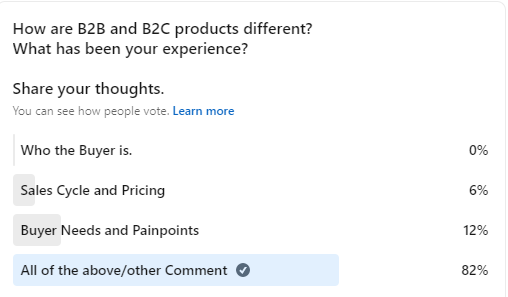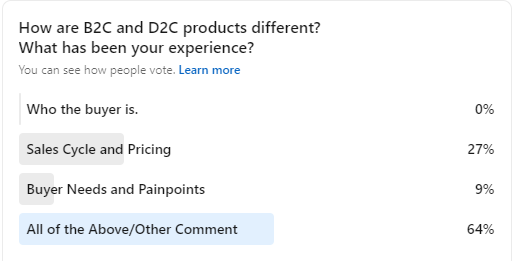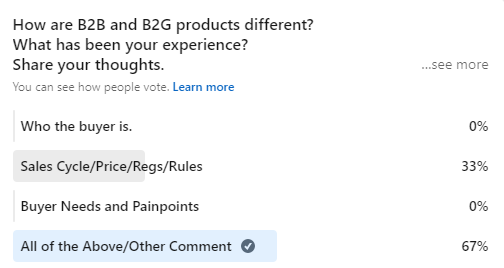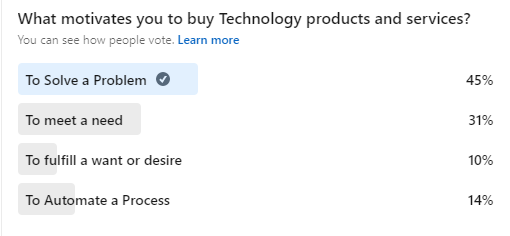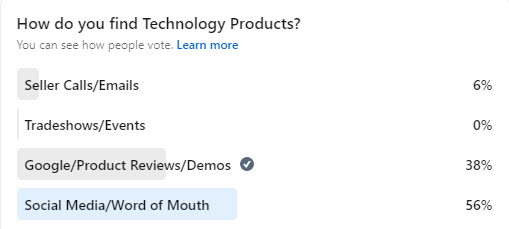How to Obtain & Leverage Customer Testimonials & Referrals
Once you have made a sale to a customer, it is important to follow up with them. In Sales, it is important to deliver on the promises you make to customers. This means checking in with the customer throughout the implementation of your product or service. Staying in touch with a customer post-sale is also important to earn repeat business and referrals.
As an outside sales representative in New York City, making sales was the highlight of my day. Once I made a sale, I was itching to ask for a referral or a testimonial. In other words, I wanted to ask the customer the question Do you know of anyone who could benefit from my product and services? However, once I made the sale, my inner voice told me not to ask for a referral.
Now many people would want to ask because they feel that the customer bought their products or services and this shows a sign of trust. But what did the customer buy? Yes, the customer bought you and your products but the main thing that they bought was your promise to deliver value through your offering. How can you ask someone to put their credibility on the line when you and your solution are unproven? Yet many people do.
Asking for a referral right after the sale is a mistake because you have not delivered on your promise and you will seem ungrateful. The customer will think that you are not interested in building a relationship and that you just want to make a commission. Remember your job as a Salesperson is to build relationships with customers and to make sales by demonstrating the value of your products to the customer. Once the sale is complete, it is your job to deliver on the promises that you make to your customer.
When to Ask
Now you are thinking well this is great but when do I ask for a referral? How do I ask for a referral?
I would ask the customer for a referral when I know the customer is happy with the implementation of your product or service. In other words, ask when you have delivered on your promise. If you offer more than one product or service try to cross-sell or upsell the customer first. See if the customer will use more of your products or services or if the customer purchases more expensive offerings from you. Once the customer purchases more items from you, the customer is demonstrating that they like and trust you. This is the time to ask for a referral. I usually waited until this point to ask for a referral.
Ask the customer for a referral by thanking them for the business that they have provided. I would then ask if they knew of anyone like themselves that would benefit from my offering. My experience has taught me that customers were always willing to offer themselves as a reference. Customers who offered me a referral would let me use their names with other clients or pass my name along to their peers.
Testimonial Formats
Testimonials are like referrals. Testimonials can come in a variety of forms. There is a testimonial letter and a testimonial video. The testimonial letter is when a customer writes a letter stating that you did a wonderful job for them and endorses you. The digital version of this letter is the recommendation feature on LinkedIn and,/or uploading a letter to your website. The testimonial video is when a client speaks of your performance in a short video segment. This can be done by the sales or marketing team depending on if there are customer advocacy or referral marketers on your team.
When asking for a testimonial, offer the customer the option to choose the option they feel comfortable with. Also, be sure to tell them what specific aspect of your service you want them to focus on. Once you receive a referral and/or testimonial, make sure to thank your customer. Should you get new business through a referral, provide great service otherwise your customer will not give you anymore! Keep your customer informed on the status of the relationship with the referral.
Customer Evangelism
Providing customers with great products and experiences is a great way to get customers to help market your products and services.
Below is an example of how Hyundai used customer marketing & testimonials to roll out Connected Care at the NY Auto Show.
Previously, I wrote an article about what the auto show could teach us about trade show marketing.
Hyundai made one of the best presentations of this particular show. They dared to be different. Instead of the traditional press conference, where journalists sit, take in the information and ask questions post-conference, Hyundai included a Q & A session right into the presentation. The conference was not a conference at all; it was a town hall. John Krafcik, CEO of Hyundai Motor America, used the opportunity to roll out Connected Care. This is a service that allows drivers to get help in case of emergencies. The service also updates owners on the health of their vehicles.
To back up their claims, they had customers provide in-person testimonials of how their lives were saved. One of their customers survived a head-on collision thanks to the service. Unable to contact his family, the service notified them of the customer’s condition. Now that’s a testimonial. If I need a new vehicle, I would strongly consider buying a Hyundai.
The live customer testimonials are worth their weight in gold. Prospects will believe what customers say over any marketing campaigns that brands create. This is a strategy that any business or brand can use. Offer quality products and a great customer experience. Serve customers in this way, and they will be more than happy to share their stories with the world! This is the best kind of advertising that anyone could ask for. Certain customers may even become evangelists.
Customer Appreciation
The easiest way to make sales is to earn referrals and testimonials from your customers. Customers are usually delighted to provide referrals and testimonials for products that work. However, you need to show your appreciation to your customers who put their name and reputation on the line for you.
How you show this appreciation could take many forms. You could bring them baked goods or take them out to dinner. Taking them to a sporting event or concert of their choice is a great way to build your relationship. Find out what type of gift your customers want and try to get for them if it is feasible. Remember to do a good job for your new customer!
Customer Loyalty & Reward Programs
Another thing you could do is to show appreciation is to provide customers a coupon for 15 percent off any item that you sell once their referral has been converted to a sale. I would also provide a thank you note with the coupon. Also, I would develop a point and reward system that encourages your customers to provide you with more referrals. Credit card companies use a rewards and points system when customers make purchases. This can be a model you can copy and implement; depending on your budget. Gift cards can also be an option.
Building Communities
Brands can create online and offline events for loyal customers to reward them. They can also create user groups on social networks such as LinkedIn, Facebook, and Slack.
Brand Ambassadors, Referral, Affiliate & Influencer Marketing
Brands can also develop a brand ambassador, referral, and/or affiliate marketing program. Some brands use influencer marketing to help sell and market products. Some influencers are celebrities but some brands use micro-influencers that are known in a particular industry.
Remember, word-of-mouth marketing is a great tool to earn new business. Taking the time to say thank you is well worth the time and effort. Your customers have more weight with your prospects than you do! Let your customers help you earn new business. Your existing customers are one of the best sources of new business. Turn these customers into Apostles.
This is why you should reward your customers for providing referrals and testimonials.
How have you included your customers in your marketing?
Comment below.
About Me
I’m a Strategic Marketer with Field Sales, Sales Enablement, Content Creation and, Classroom Teacher/Trainer skill-sets using Marketing to drive Sales/Growth.
As a Marketer, I’ve worked with Start-Ups, a Political Campaign, and a Digital Marketing Conference.
I’m certified in Inbound Marketing with classes in Marketing, Product Management, Product Marketing, SEO, SEM.
Before teaching, I was an Outside Sales and Marketing Rep. selling and marketing dental products to Dentists using consultative selling, trade show marketing, field marketing, and market research.
I publish Sales, Marketing & Social Media Today a blog covering industry events and trends.
Articles and insights have been featured, mentioned and, referenced in:
Tractica in the News
The Future of AI
https://medium.com/@DanGalante/the-future-of-ai-insights-from-the-ai-summit-ab6267eca70b
Digital Marketing World Forum
Voice Summit
Compilation: Our Favorite Post-VOICE Coverage So Far
https://www.voicesummit.ai/blog/compilation-our-favorite-post-voice-coverage
Engage Bay
7 Steps to Align your Marketing Automation Strategy
https://www.engagebay.com/blog/marketing-automation-strategy/
Relay 42
The Role of Technology in Customer-Centricity
https://relay42.com/resources/blog/the-role-of-technology-in-customer-centricity
Databox
How to Improve Marketing and Sales Alignment (Gave background)
https://databox.com/how-to-improve-sales-marketing-alignment
Onalytica
Named as a Top STEM Influencer for EdTech and Education Industry Insights.
http://www.onalytica.com/blog/posts/stem-top-influencers-brands-publications/
The Arizona Republic
http://yourbusiness.azcentral.com/handle-top-10-sme-sales-objections-24845.html
Twitter Ads Blog
https://blog.twitter.com/2014/how-smartphone-users-engage-on-twitter-three-key-findings
Paper.li’s Wall Of Fame via Scoop.it
http://www.scoop.it/t/all-things-paper-li/?tag=Dan+Galante
I’ve been honored for my Social Profiles
•LinkedIn SSI Score in the Top 1%
•SlideShare for being in the top 5% of profiles viewed in 2014
•LinkedIn Profile was in the top 1% of profiles viewed out of 200 million members in 2012
I’m seeking a full-time role in:
Inbound Marketing, Digital Marketing, Content Marketing, Product Marketing, Demand Generation, Social Media Marketing, Sales Enablement Enablement, Sales Strategy, Marketing Strategy, Employer Branding, Recruitment Marketing.
Open on title, industry, company, location, and level. Reach out on LinkedIn or at dan@dangalante.com to start a conversation.

